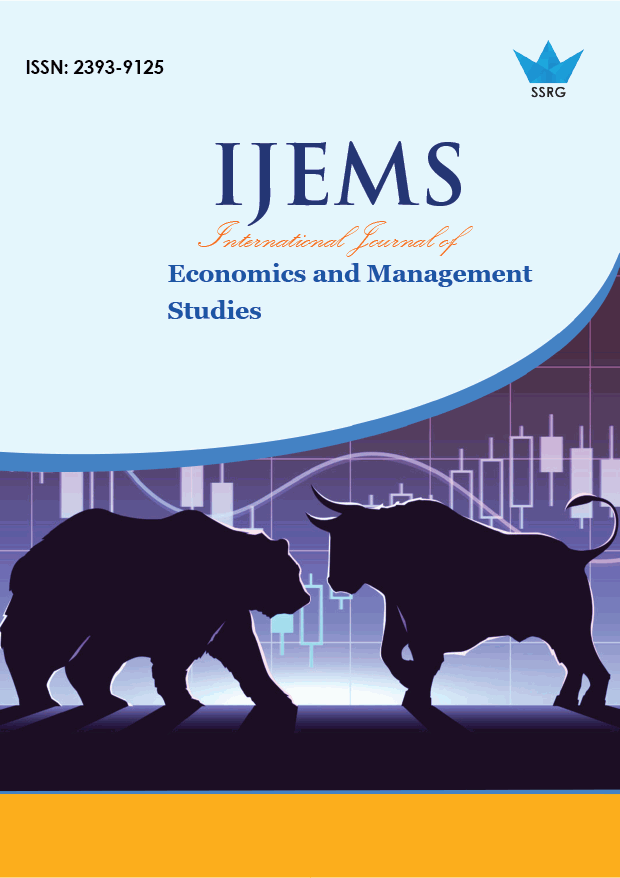Development of Customer Loyalty Convenience Stores in Wonokromo District Surabaya

| International Journal of Economics and Management Studies |
| © 2019 by SSRG - IJEMS Journal |
| Volume 6 Issue 10 |
| Year of Publication : 2019 |
| Authors : Deograsias Yoseph Yustinianus Ferdinand, Stephanie Astrid Ayu |
Citation:
Deograsias Yoseph Yustinianus Ferdinand, Stephanie Astrid Ayu, "Development of Customer Loyalty Convenience Stores in Wonokromo District Surabaya" SSRG International Journal of Economics and Management Studies 6.10 (2019): 52-55. Crossref, https://doi.org/10.14445/23939125/IJEMS-V6I10P107
Deograsias Yoseph Yustinianus Ferdinand, Stephanie Astrid Ayu,(2019). Development of Customer Loyalty Convenience Stores in Wonokromo District Surabaya. SSRG International Journal of Economics and Management Studies 6(10), 52-55. https://doi.org/10.14445/23939125/IJEMS-V6I10P107
Abstract:
Grocery stores are businesses that require precise strategies to develop effectively. In order for a grocery business to run well, a good management concept is needed, namely customer orientation, coordinated business effort, goal orientation. Besides that, it is necessary to increase customer satisfaction and maintain customer loyalty. This development of loyalty has developed well in minimarkets that grow around grocery stores so that the development of grocery store loyalty requires attention and in-depth understanding. This research is a qualitative descriptive study. The results of this study are from 3 Kotler formulations that cause the creation of customer loyalty is still difficult to apply by grocery stores due to the low management of information which is the basis of the database due to the traditional grocery store management.
Keywords:
Customer Loyalty, Customer Satisfaction, Grocery Stores
References:
[1] Giddens, Nancy. (2002). BrandLoyalty. Missouri Value-added Development Center, University Of Missouri
[2] Guswai, Christian, (2013), How To Operate Your Store Effectively yet Efficiently, Jakarta: Peberbit Elex Media Komputindo
[3] Kotler, P, & Keller, K.L, 2007, Marketing Management (12th ed.). Prentice Hall.Inc, 2012, Marketing Management (14th ed.), Prentice Hall, Inc.
[4] Levy, Michael, (2004), Retailing Management , Mcgraw-Hill Company
[5] Maro’ah, S., Mochklas, M., Firmansyah, M.A., & Roosmawarni, A/ 2018. Marketing Framework of Small and
Medium Enterprises (SMEs) Based on Marketing Mix of Syariah. International Journal of Management and Economics Invention. 4(9):1924-1928
[6] Mochklas, M. 2016. Role of Leader in Creating Organizational Culture and Product Innovation to Reach Sustainable Competitive Advantage (Study on Ngingas Metal Village SME of Sidoarjo, East Java). The International Journal Of Business & Management, 4(7):251-256
[7] Mochklas, M., Panggayudi, D.S., & Soenarto. 2019. The Work Culture of South Korean Companies In Indonesia. Humanities & Social Sciences Reviews, 7(4):603-60
[8] Mukarromah, S., Maro’ah, S., & Mochklas, M. 2018. Implementasi Strategi Bauran Pemasaran Dalam Meningkatkan Volume Penjualan Toko Baju Senam Grosir. Com. Jurnal Eksekutif, 15(2):316-333
[9] Nur Achmad Rofi’i, Didin Fatihudin, Mochamad Mochklas. 2019. Pengaruh Strategi Bauran Pemasaran Terhadap Peningkatan Penjualan Pada Produk Dr. Kebab Bara Satriya Sidoarjo. Jurnal BALANCE, 16(1): 112-119
[10] Sopiah and Syihabudhin, (2008), Manajemen Bisnis Ritel , Yogyakarta: Penerbit Andi Offset
[11] Sugiyono. (2009). Metode Penelitian Bisnis. Bandung: Penerbit CV. Alfabeta

 10.14445/23939125/IJEMS-V6I10P107
10.14445/23939125/IJEMS-V6I10P107